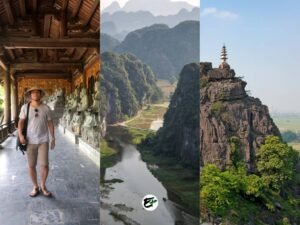12 Beautiful Parks in Tokyo (With Google Maps & Directions)
Tokyo, a vibrant megacity, is a blend of both traditional and modern culture. It’s not just about the glittering buildings that light up the night.
Have you ever wondered where those stunning Instagram photos of Tokyo, filled with cherry blossoms or autumn leaves, originate? Well, wonder no more! I’ve gathered them all for you.
In this post, you’ll discover the parks, gardens, and rivers where you can witness the autumn hues and beautiful cherry blossoms in Tokyo. I put together this post with one goal in mind – to assist tourists and travelers like us in experiencing the natural beauty of Tokyo.
This post contains affiliate links. I may receive a tiny commission at no additional cost to you.
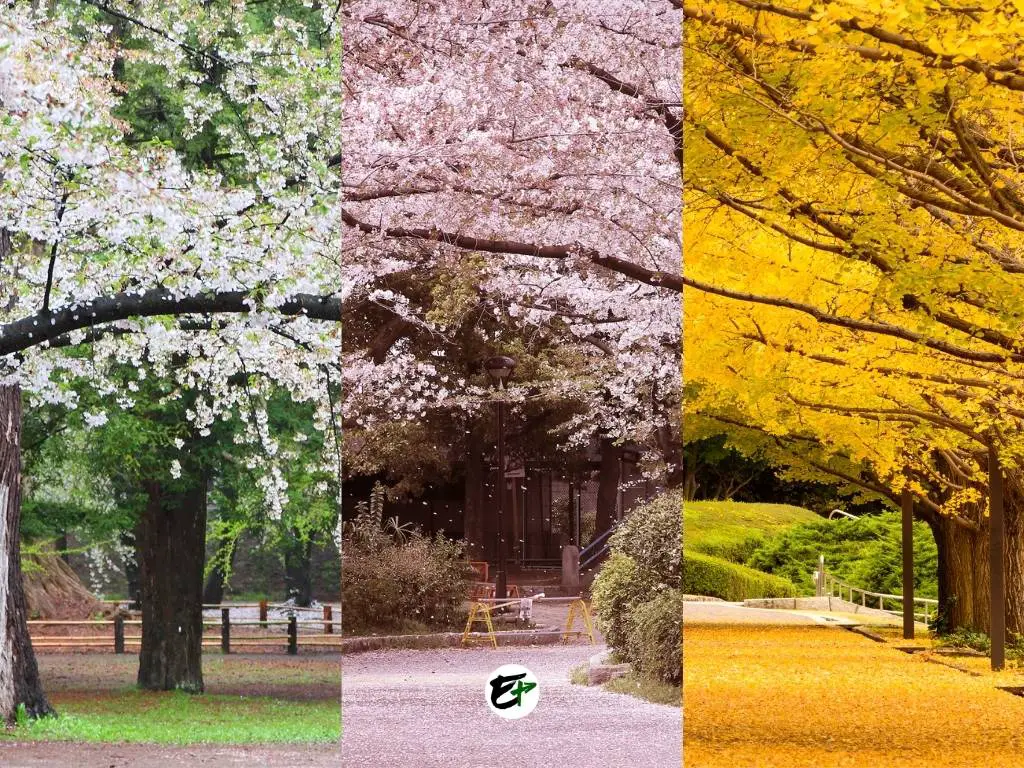
Use the table of contents to skip to topics.
Check out my other articles about Japan.
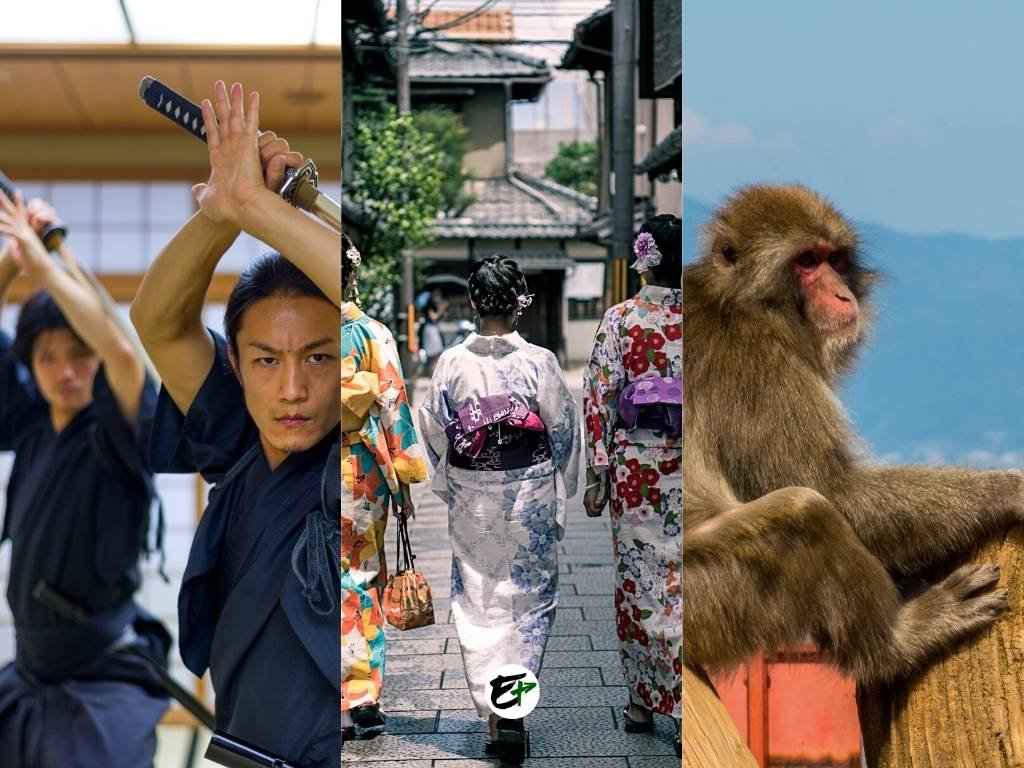
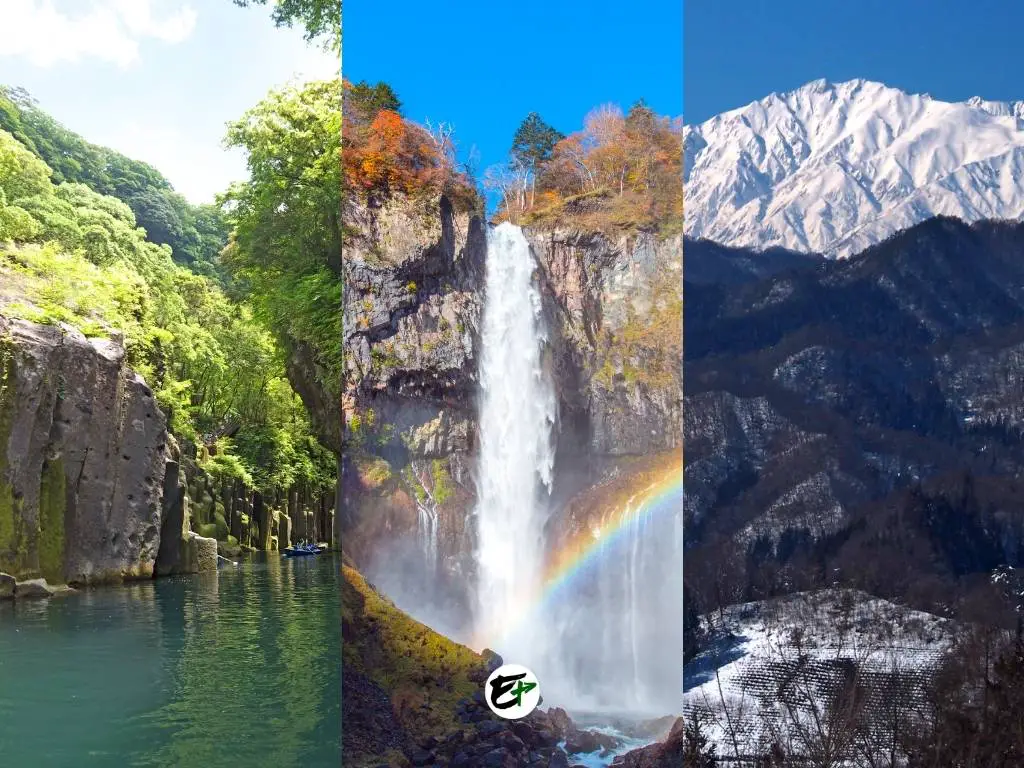
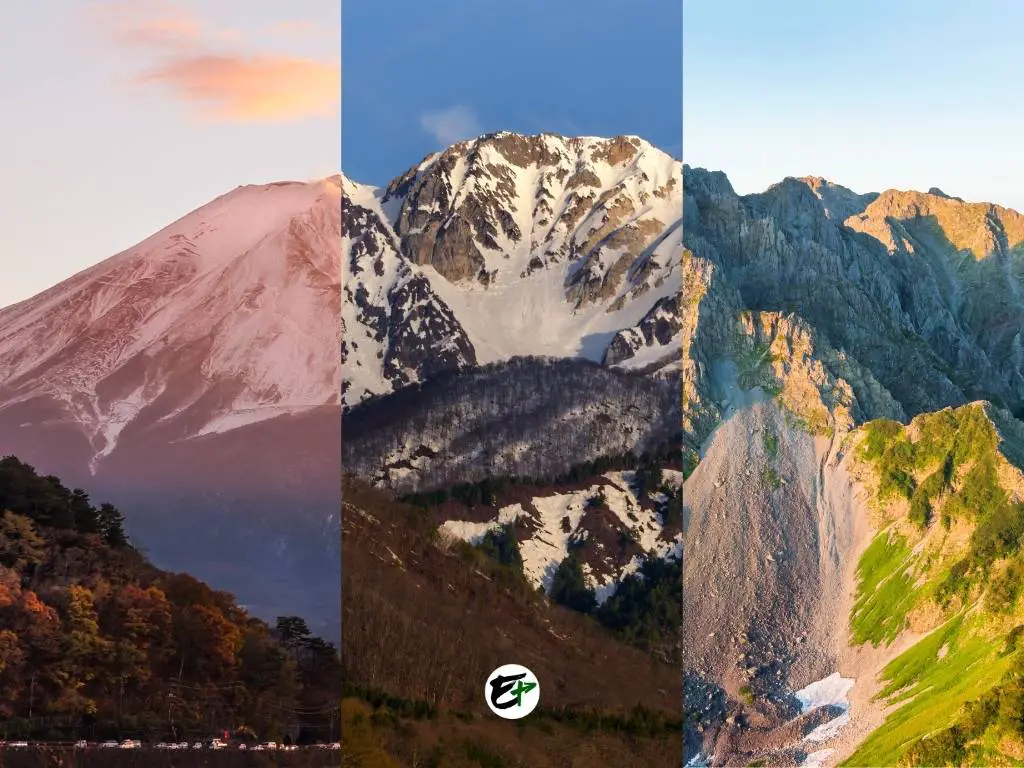
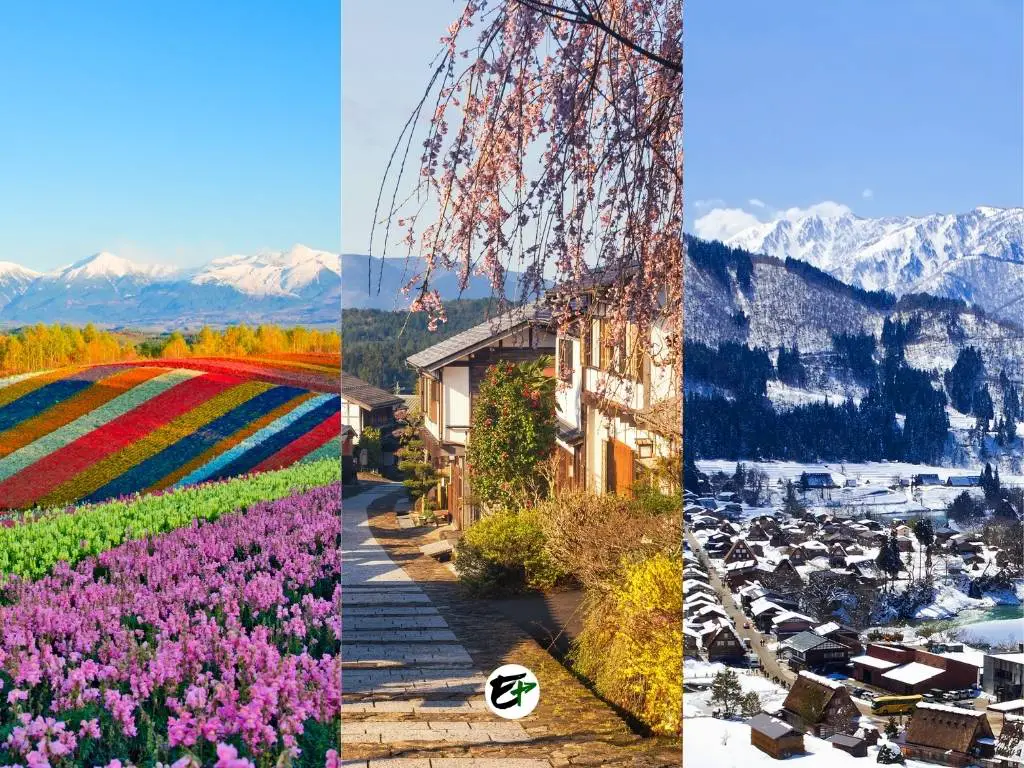
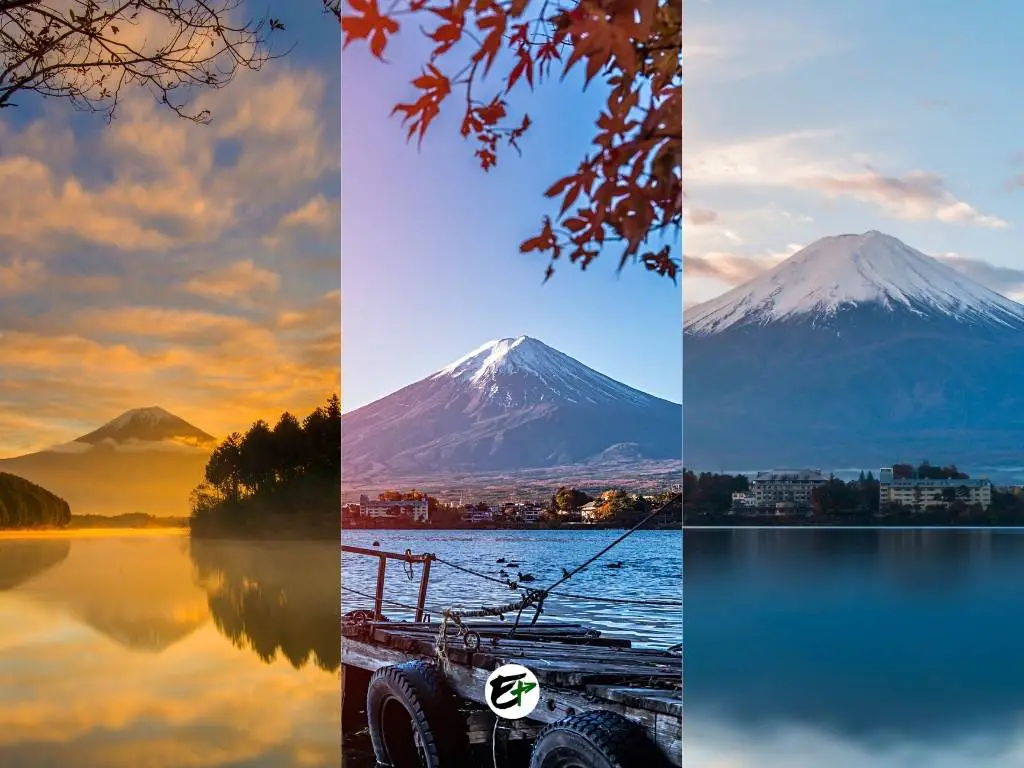
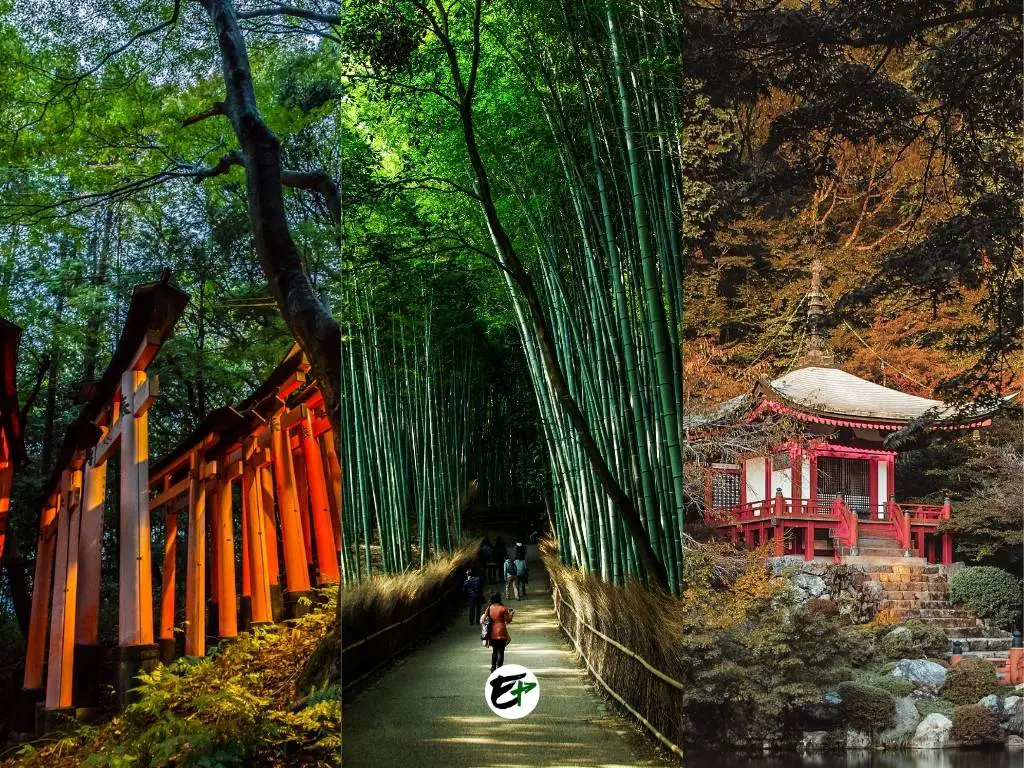
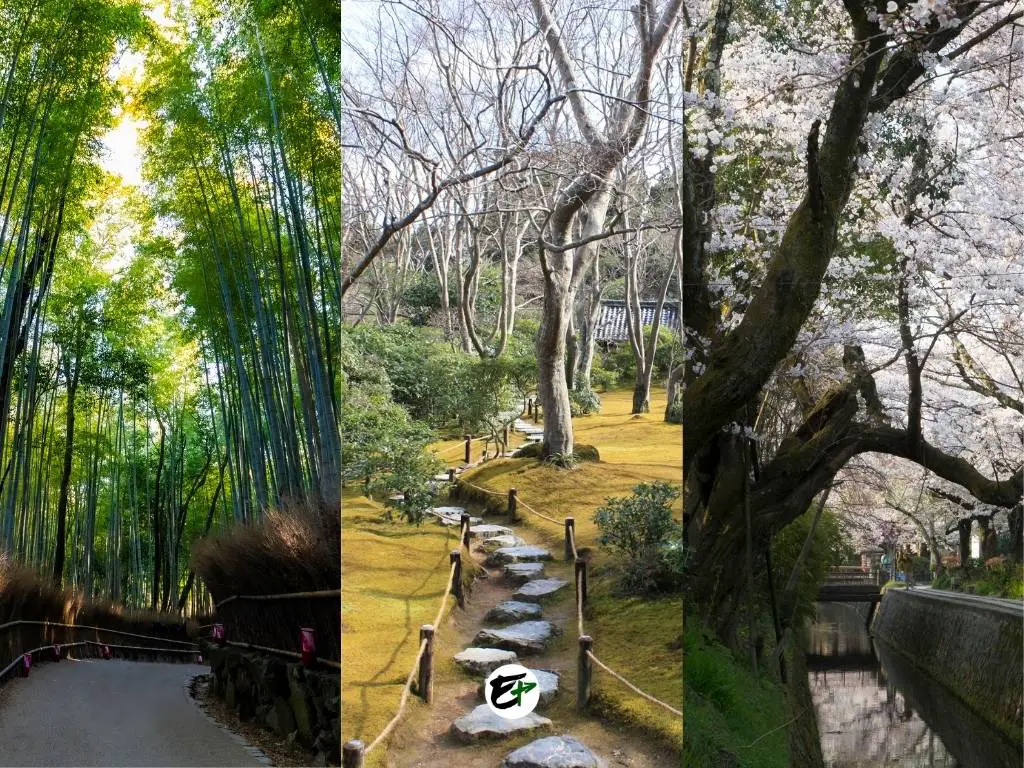

To help you navigate, the Google Map locations of these parks are readily available here. This will show you exactly where they are. Additionally, I’ve included the ways you can access these gardens in Tokyo.
However, before we dive into that, it’s crucial to plan your visit at the right time of the year. This is when these gardens and parks are at their most vibrant:
- Plum Blossoms: These start to bloom from late February through March.
- Cherry Blossoms: You can witness these from late March to early April.
- Fall Foliage: The best time to see this is from late November to early December.
So, plan your visit accordingly to experience the full burst of colors.
Staying in Tokyo for several days? Here are the best hotel deals in Tokyo.
1. Hamarikyu Gardens – A Park in Tokyo with Blooms and Skyscrapers
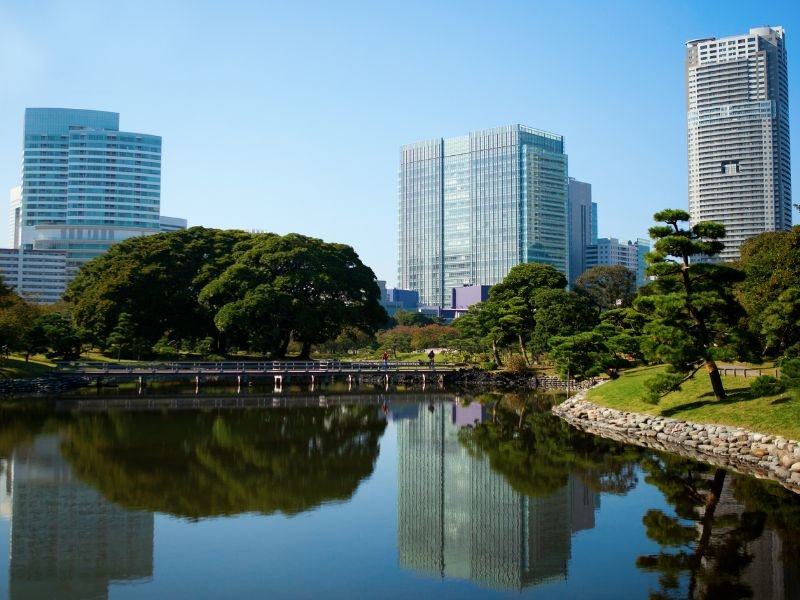
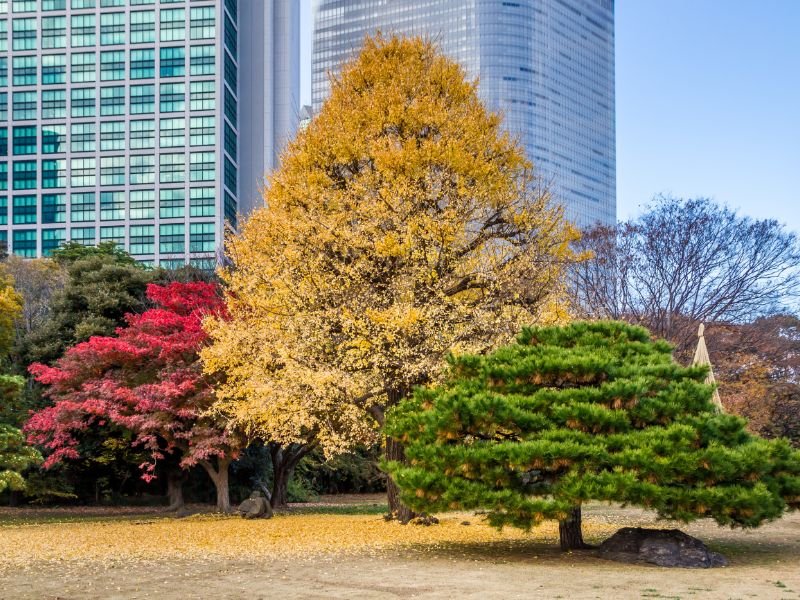
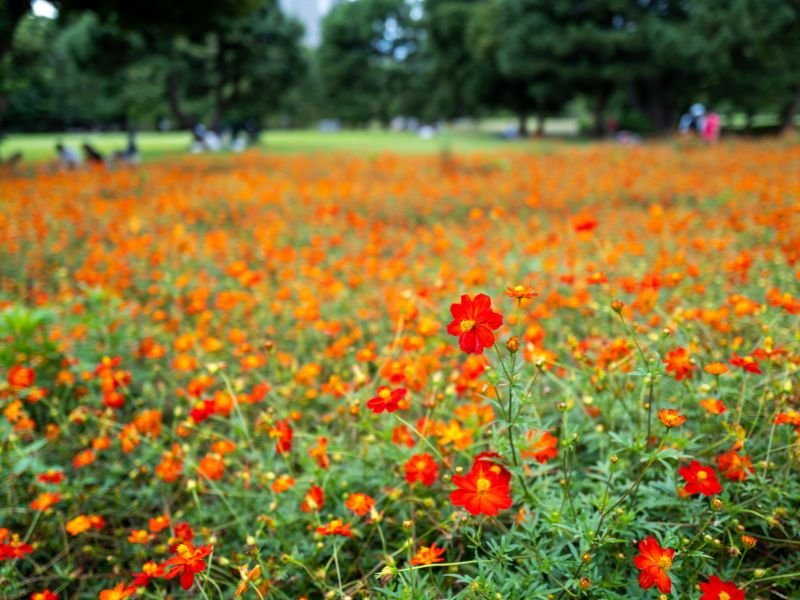
Click the images of Hamarikyu Gardens to enlarge.
Our discovery through the most beautiful parks in Tokyo begins with Hamarikyu Gardens. This garden, designed in the traditional Edo-period style, nestles between the Sumida River and the Shiodome district.
For many years, it served as a retreat for feudal lords and emperors. It wasn’t until April 1946 that Hamarikyu Gardens opened its gates to the public. Now, it stands as a testament to Tokyo’s rich history and natural beauty.
What to expect in Hamarikyu Gardens
Hamarikyu Gardens is a delight to visit at any time of the year. The sight of tall buildings and their reflections dancing on the surface of the ponds is truly mesmerizing.
The garden is home to maple and ginkgo trees that put on a vibrant display of autumn colors. While it’s a pleasant spot to witness fall foliage, it may not be the best in the area.
As spring arrives, Hamarikyu Gardens bursts into a riot of colors. Plum blossoms make their appearance in early February, followed by cherry blossoms from the last weeks of March to early April. Additionally, peony and canola flowers add to the springtime bloom in the garden.
The park features several ponds and islets, one of which houses a tea house in the middle. Here, you can unwind and enjoy the Tokyo skyline from a comfortable and cozy spot.
In the northern section of Hamarikyu Gardens, you’ll find a flower bed that’s perfect for capturing stunning photos. It’s a great spot to create lasting memories of your visit.
How to go to Hamarikyu Gardens
There are three convenient ways to reach Hamarikyu Gardens:
- If you prefer less walking, consider taking a train along the Oedo Subway Line or Yurikamone Line. Alight at Shiodome Station and from there, it’s just a five-minute walk to the gardens.
- For an alternative route, you can alight at Shimbashi Station. From there, it’s a leisurely fifteen-minute walk to Hamarikyu Gardens.
- If you’re up for a unique experience, why not take the Tokyo Water Bus? It will drop you off at the northeastern part of the park, offering a different perspective of the gardens.
Location: 1-1 Hamarikyuteien, Chuo City, Tokyo 104-0046, Japan
2. Koishikawa Korakuen – The Oldest Garden in Tokyo
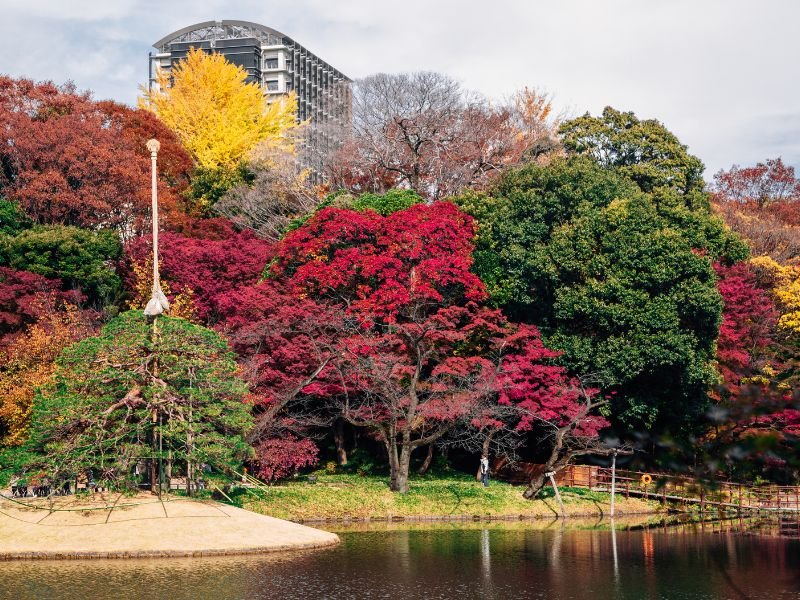
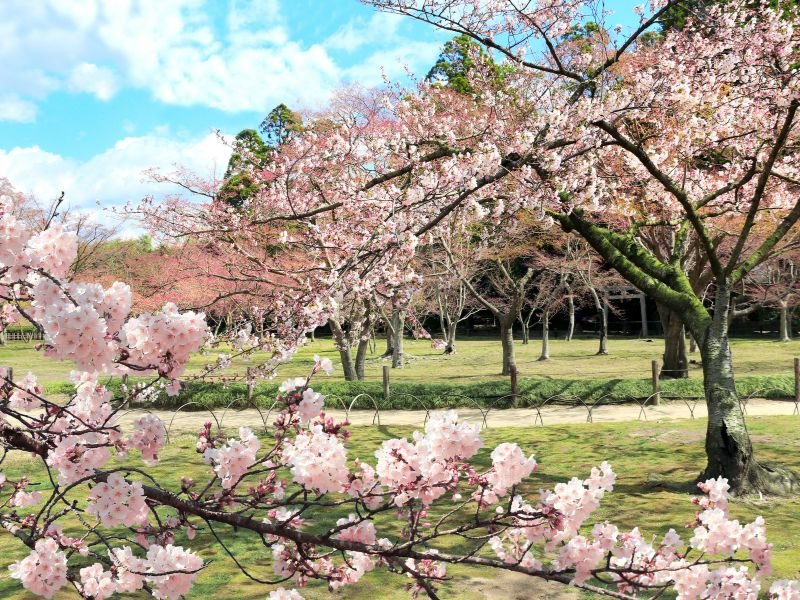
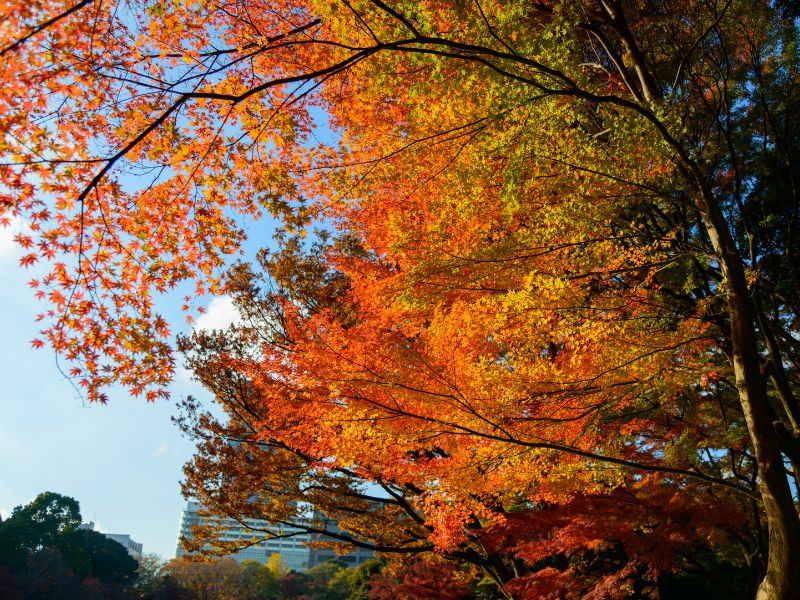
Click the images of Koishikawa Korakuen to enlarge.
Dating back to the early Edo period in the 1600s, Koishikawa Korakuen Gardens was originally built as a residence for a ruling family. Today, it holds the distinction of being Tokyo’s oldest garden. Interestingly, the garden is located right next to a dome-shaped baseball stadium. This urban entertainment complex also features roller coasters, a Ferris wheel, and a mall.
After a day filled with fun and excitement at the complex, Koishikawa Korakuen Gardens serves as an ideal spot to unwind and relax amidst nature.
What to Expect in Koishikawa Korakuen Gardens
Koishikawa Korakuen Gardens is a spectacle during the fall. The shores of the largest pond and the westernmost pond, home to the Byobu Rock, are adorned with autumn leaves. The latter, in particular, offers an exceptional view of autumn trees, its surface blanketed with fallen leaves.
As spring approaches, the northern part of the gardens welcomes the early bloom of plum blossoms, a few weeks ahead of the cherry trees near the ponds.
Venture to the southeastern part of the gardens, and you’ll discover another small pond, its banks lined with Ginkgo trees that turn a fiery yellow every autumn. Nearby, the Sleeping Waterfall offers a tranquil spot for relaxation.
For refreshments, head to the Kantoku-Tei Tea House in the southwestern part of the gardens. Known for its tasty food at reasonable prices, it offers a dining experience with a view of the park.
Unexpectedly, north of the Kuhachiya Pavilion, you’ll find a small rice field. A wooden platform allows you to cross the field, adding a touch of adventure to your visit.
Finally, the gardens are home to two picturesque bridges: the Tsutenkyo Bridge, a red bridge, and the Engetsukyo Bridge, a stone bridge. Both add to the charm and beauty of Koishikawa Korakuen Gardens.
How to Go to Koishikawa Korakuen Gardens
Reaching Koishikawa Korakuen Gardens is quite straightforward. It’s conveniently located just a five-minute walk away from several stations.
- Firstly, there’s Korakuen Station, which is quite close.
- Next, you have Suidobashi Station. This station is a hub for multiple lines including the JR Chuo Line, Toei Oedo Line, and the Tozai, Yurakucho, and Namboku Tokyo Metro lines.
- Lastly, Iidabashi Station on the JR line is also a good option.
Location: 1 Chome-6-6 Koraku, Bunkyo City, Tokyo 112-0004, Japan
3. Shinjuku Gyoen – A Beautiful National Garden in Tokyo

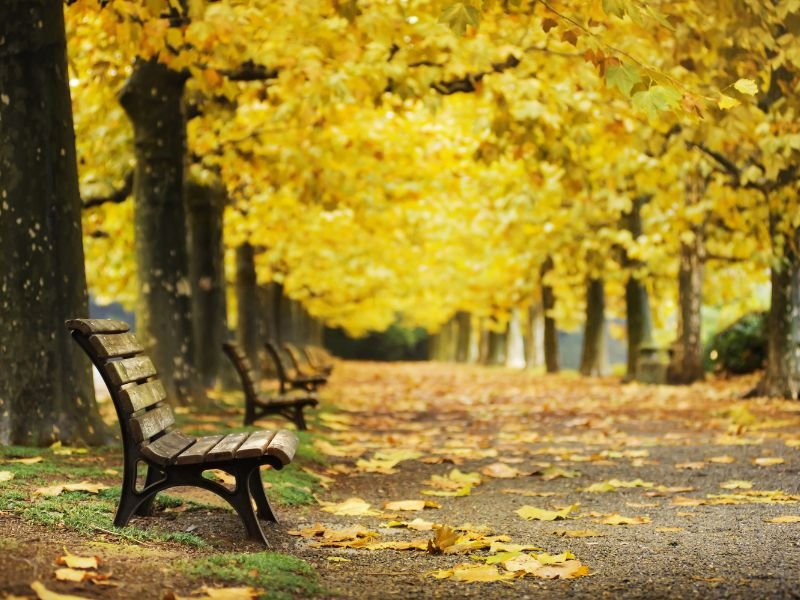

Click the images of Shinjuku Gyoen to enlarge.
Shinjuku Gyoen, one of Tokyo’s most beautiful parks, is renowned for its abundant cherry blossoms that blanket the park during spring. The spacious lawns are a popular spot for locals and tourists alike, providing a perfect setting for simple leisure activities and bonding moments.
The garden boasts a rich history. Initially, it served as a residence for a feudal lord. Over time, it transformed into a botanical park, then a recreational space for the imperial family, before finally becoming a public park in 1949.
What to Expect in Shinjuku Gyoen
Shinjuku Gyoen is home to three distinct gardens:
- The Japanese Traditional Garden graces the southern portion of Shinjuku Gyoen. Its defining features are the serene ponds and charming islets, all connected by bridges.
- The English Garden, located in the heart of Shinjuku Gyoen, offers wide-open spaces dotted with an array of trees.
- Lastly, the French Garden, nestled in the southeastern part of the garden, completes the trio. Each garden contributes to the diverse beauty of Shinjuku Gyoen.
In addition to the diverse gardens, Shinjuku Gyoen has much more to offer:
- At the Okido Gate / Shinjuku Gyoen Entrance, you’ll find a beautifully designed greenhouse garden. It’s home to thousands of plant species, including cacti, orchids, tropical plants, and even indigenous Japanese plants.
- Adjacent to the greenhouse is an old imperial resthouse. Constructed in 1896, it served as a relaxation spot for the royal family after their leisure activities in the garden.
- The park also features tea houses where you can enjoy snacks while admiring the beautiful trees. If you’re a coffee lover, there’s a Starbucks located just before you reach the French Garden.
- As you approach the French Garden, you’ll be greeted by the sight of Instagram-worthy Rose Beds. These beds are filled with roses in shades of yellow, red, white, and pink.
- The majority of the cherry trees are concentrated south of the Kids Area, on the other side of the pond, right in front of Starbucks.
- For those who wish to see a multitude of trees showcasing vibrant autumn leaves, head to the Shimono Ike pond. Located at the very corner of Shinjuku Gyoen, beside the French Garden, it’s a sight to behold during fall.
- History enthusiasts can visit the historic pavilion, Kyu-Goryo-Tei (Taiwan Pavilion), situated at the center of Shinjuku Gyoen. The pond in front of the pavilion offers a fantastic photo opportunity, reflecting the trees and buildings seen from the pavilion.
How to Go to Shinjuku Gyoen
Shinjuku Gyoen features three gates, each conveniently located near a station. This makes accessing the park quite easy.
The Okido Gate is just a five-minute walk from Shinjuku Gyoenmae Station. On the other hand, the Sendagaya Gate is even closer to its nearby station. It’s only a four-minute walk from Sendagaya Station.
Location: 11 Naitomachi, Shinjuku City, Tokyo 160-0014, Japan
4. Jingu Gaien Ginkgo Avenue – A Garden in Tokyo with Scenic Lining Ginkgo Trees

Jingu Gaien Ginkgo Avenue is situated in Meiji Jingu Outer Garden. This western-style urban garden is a prominent feature of the Shinjuku and Minato Wards in Tokyo. The park was brought to life by private volunteers, their aim being to embody the virtues of Emperor Meiji.
The avenue provides access to numerous city facilities and cultural heritage buildings. These include the Meiji Memorial Hall, the Meiji Memorial Picture Gallery, the Meiji Jingu Stadium, and the Meiji Jingu Gaien Softball Ground. It’s a hub of activity and history, right in the heart of the city.
What to Expect in Jingu Gaien Ginkgo Avenue
The avenue is flanked by at least 140 Ginkgo Trees. During the autumn season, the leaves of these trees transform into a vibrant yellow hue. This metamorphosis gives the passageway the appearance of a golden tunnel.
Despite its stunning beauty, a stroll through the golden tunnel is a brief affair. You can traverse the entire length of the avenue in less than 10 minutes.
For those in need of a break or a quick bite, the western end of the avenue houses shops offering coffee and burgers. It’s a convenient spot for refreshments during your visit.
How to Go to Jingu Gaien Ginkgo Avenue
Two train stations provide easy access to the entrance of Jingu Gaien Ginkgo Avenue.
If you’re coming from Aoyama Station, a short 4 to 5-minute walk westward will lead you straight to the entrance of Jingu Gaien Ginkgo Avenue.
Alternatively, if you’re at Gaiemmae Station, a quick 2 to 3-minute walk eastward will bring you to the start of the avenue. It’s a convenient and straightforward journey from either station.
Location: 2丁目-付近 Kitaaoyama, Minato City, Tokyo 107-0061, Japan
5. Rikugien Gardens – Tokyo’s Garden with a Big Weeping Cherry Tree
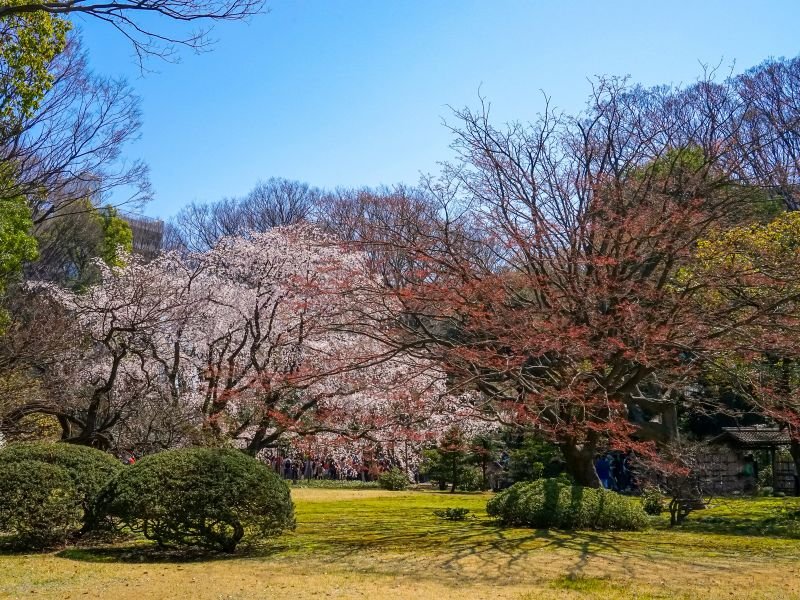

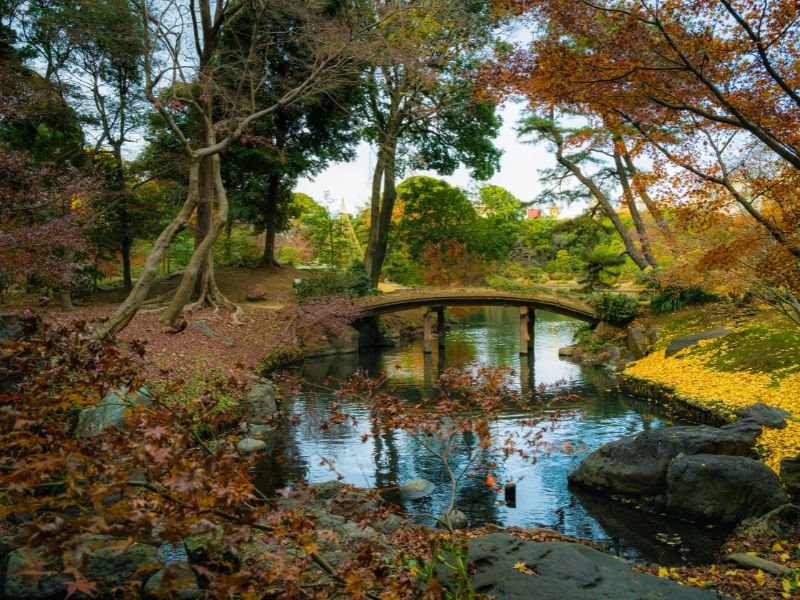
Click the images of Rikugien Gardens to enlarge.
Rikugien Gardens is a garden typical of the daimyo style, constructed during the Edo Period. It features a large central pond and manmade hills. Today, it is recognized as a special place of scenic beauty. The garden comprises forests and open lawns, all connected by scenic trails.
What to Expect in Rikugien Gardens
As you approach the park, you’ll notice several cherry trees near the entrance. They bloom every spring, creating a captivating display. One particular sight to see is the large weeping cherry tree just beyond the wooden entrance gate.
Venture further into the gardens, and you’ll come across a large pond. An islet sits in the middle of this pond, connected by the Dentsuru Bridge. However, access to the islet is restricted.
To the north of the islet, you’ll find the Fujishirotoge Viewpoint and the Tsutsujijaya teahouse. This area of the garden offers the best views of the fall foliage.
Further along, at the end of a stream, you’ll find another teahouse – the Fukiagejaya Tea House. It’s a great place to rest and grab a bite to eat. The teahouse overlooks the pond and offers stunning views of the surrounding buildings.
In addition to the cherry trees, azalea bushes grow around the shores of the large pond. They bloom around the same time as the cherries, adding to the garden’s vibrant display.
Rikugien Gardens’ best viewpoints include the stream near the Tsutsuji no Chaya teahouse, the Togetsukyo Bridge, and the Fujishirotoge viewpoint. Each offers its own unique perspective of the garden’s beauty.
How to Go to Rikugien Gardens
To reach Rikugien Gardens, you’ll need to take a train ride. You have two options: the JR Yamanote Line or the Tokyo Metro Namboku Line. Your destination is Komagome Station. Once you disembark, your journey continues on foot.
A short walk of 3 to 5 minutes will bring you to the gates of Rikugien Gardens. It’s a straightforward and scenic route to one of Tokyo’s most beautiful gardens.
Location: 6 Chome-16-3 Honkomagome, Bunkyo City, Tokyo 113-0021, Japan
6. Inokashira Park – A Park with Boat and Zoo in Tokyo
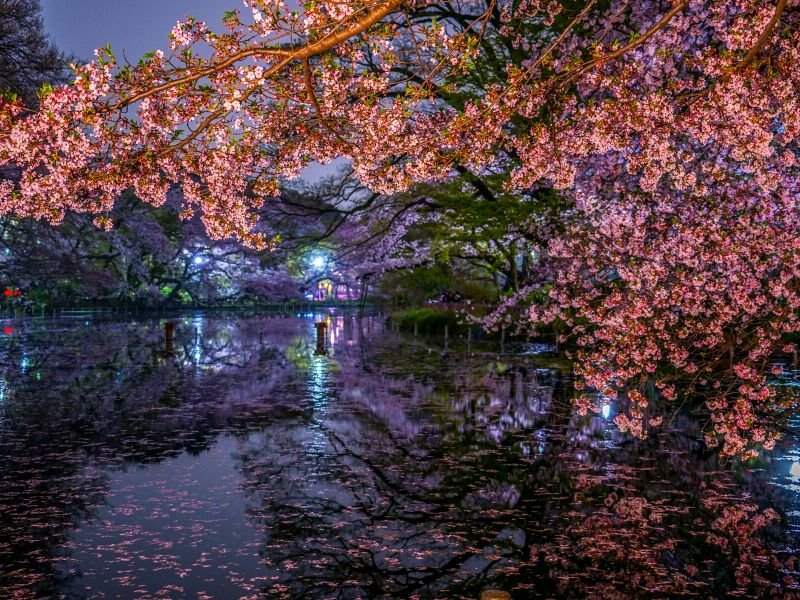


Click the images of Inokashira Park to enlarge.
Inokashira Park, home to approximately 500 cherry blossom trees, is a popular destination for tourists during the Spring season. The park’s beauty is further enhanced by the presence of other plant species such as cypresses, azaleas, and red pines.
The park itself is a generous gift from the imperial family to the people. It offers a variety of leisure spots, including a zoo and a museum. One of its unique features is a triangular-shaped pond, complete with a peninsula in the middle. Here, visitors can rent a swan boat and enjoy a leisurely tour around the lake, especially during spring when the cherry blossoms are in full bloom.
Shaped like a crescent, Inokashira Park offers a multitude of sights and experiences. It’s a place where every visit brings something new to discover.
What to Expect in Inokashira Park
In the northern section of Inokashira Park, you’ll find the narrowest part of the Inokashira pond. This area is particularly beautiful in the spring when the cherry trees around the pond burst into bloom.
Just south of this narrow stretch, there are several shops where you can enjoy Thai and Italian cuisine, or grab a coffee. Two bridges, Nanai Bridge and Komae Bridge, span the lake, connecting the shore to a small peninsula. This is where the Inokashira Park Boat Station is located. Here, you can rent a boat and take a leisurely tour around the lake, especially enchanting when the cherry blossoms are in full bloom.
Adjacent to the boat station is the Aquatic Life Park. It has two entrances: Benten Gate, which is closer to the Main Zoo, and Nanai Gate, which is nearer to the boat station. The park is home to a variety of aquatic birds, including swans, geese, cranes, ducks, herons, and many others.
A short 300-meter walk westward, across the Gotenyama pedestrian bridge, will bring you to the main entrance of the Inokashira Park Zoo. The zoo offers a range of facilities, including playgrounds, Japanese gardens, coffee shops, animal habitats, wildlife encounter fields, an exhibition hall, and even an amusement park!
After visiting the zoo, head south to explore the larger portion of Inokashira Park. Here, you’ll find sports fields, bird sanctuaries, and smaller parks. Nestled between the sports fields is the Ghibli Museum, a whimsical place with a play area, rooftop garden, and theater.
How to Go to Inokashira Park
There are two convenient routes to reach Inokashira Park.
If you prefer a shorter walk, take the Keio-Inokashira Line to Inokashira-Koen Station. From there, it’s just a 1-minute walk to the park.
Alternatively, you can take the JR Chuo Line to Kichijoji Station. A 5-minute walk from this station will bring you to Inokashira Park. Choose the route that suits you best for a pleasant journey to the park.
Location: 1 Chome-18-31 Gotenyama, Musashino, Tokyo 180-0005, Japan
7. Showa Kinen Park – Tokyo’s Largest Park

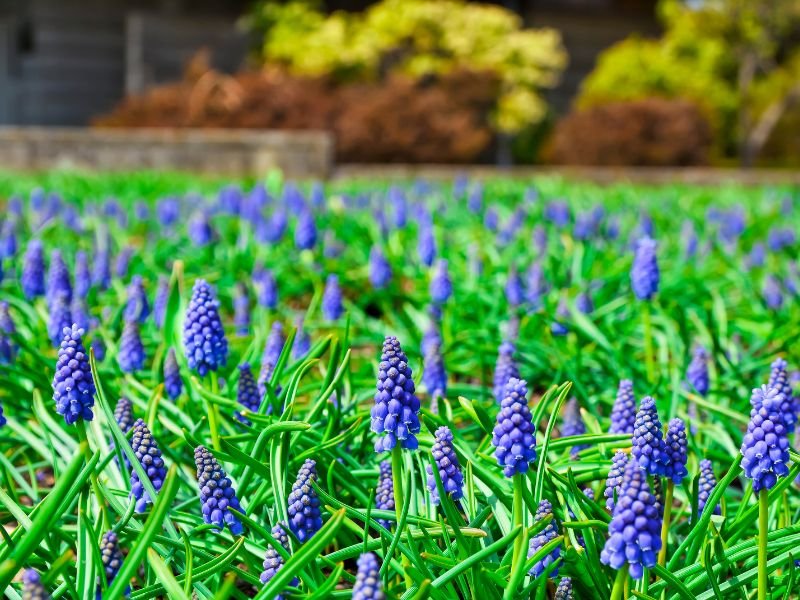
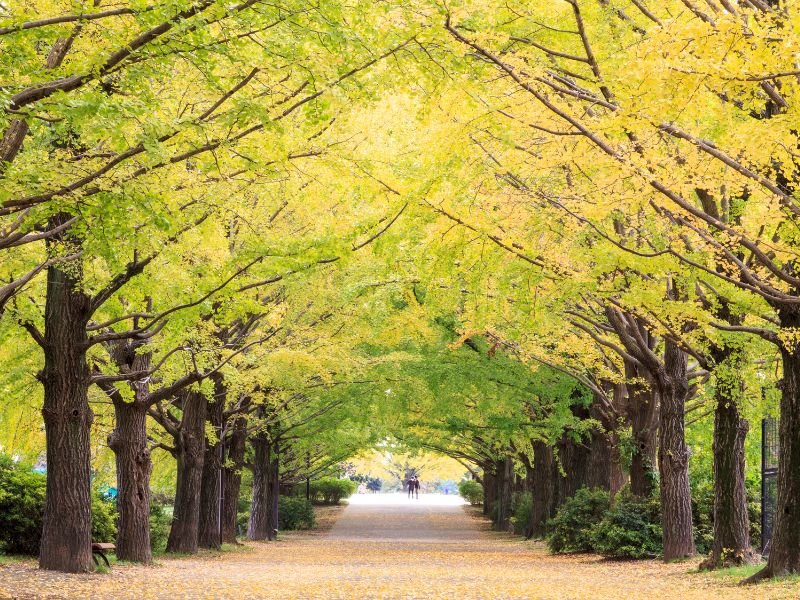
Click the images of Showa Kinen Park to enlarge.
Showa Kinen Park is a must-visit when exploring the beautiful parks in Tokyo. It holds the title as the largest park in the city, covering an impressive area of 165 hectares or 407 acres. Inside, you’ll find an 11-kilometer bike trail, perfect for those who enjoy cycling.
When viewed from above, Showa Kinen Park has an interesting L-shaped layout. This vast space is filled with numerous recreational spots and vibrant gardens. The gardens are a highlight, filled with a variety of blooming plants such as poppies, tulips, and cherries.
But the park offers more than just recreational activities. It’s home to a wide range of attractions that visitors can explore. Some of the most popular include the Ginkgo promenade and the barbeque garden. There’s also a recreation of a traditional Japanese folk village among many other features.
What to Expect in Showa Kinen Park
Showa Kinen Park offers a multitude of places to explore and activities to enjoy. Starting from the north, the park is a paradise for children.
The northwestern part is dotted with numerous playgrounds such as Foggy Forest, Children’s Forest, Adventure Forest, and Rainbow Hammocks. The Cloud Ocean, also known as Fuwa-Fuwa Dome, is another highlight in the northern part. It’s a soft, hilly playground where kids can jump and tumble without fear of injury.
Moving eastward, the northeastern part of the park is home to Flower Hill. This garden is a riot of colors, with flowers like poppies, sunflowers, tulips, and cosmos blooming in different seasons. A little further south, you’ll find an open field named “Min’na no harappa” or Everyone’s Field.
Dominated by the Giant Elm Tree, this area is surrounded by flower fields akin to Flower Hill. During spring, the view from under the Giant Elm Tree towards the northwest reveals the Cherry Blossom Garden in full bloom.
Everyone’s Field is encircled by various shops and stands to the east, south, and west. A walk westward from here leads to a row of ginkgo trees, which transform into a stunning yellow tunnel in autumn. Adjacent to this is the barbeque garden, a spot where visitors can cook and enjoy a meal.
Further south of the barbeque garden and west of the Waterfowl Pond, the largest pond in the park, there’s a water park for additional fun.
Crossing the Zanbori River eastward from the Waterfowl Pond, you’ll find the beautifully designed Park Fountain, connected to a canal with smaller fountains. This area also features another Ginkgo Promenade, similar to the one near the barbeque gardens.
Finally, at the easternmost part of Showa Kinen Park, you’ll find the Hana Midori Cultural Center. This building exemplifies “parkitecture”, a design that seamlessly blends with the park’s landscape.
How to Go to Showa Kinen Park
Showa Kinen Park is conveniently accessible via two nearby train stations. The first one is Nishi-Tachikawa Station, which is located right at the park’s entrance. This makes it an ideal choice for those who prefer to start their visit without any delay.
The second option is Tachikawa Station. While it’s not directly adjacent to the park, it’s only a short, 7-minute walk away. This station leads you to the eastern entrance of Showa Kinen Park, offering a different starting point for your exploration.
8. Chidorigafuchi Moat – Tokyo’s Postcard Perfect Park
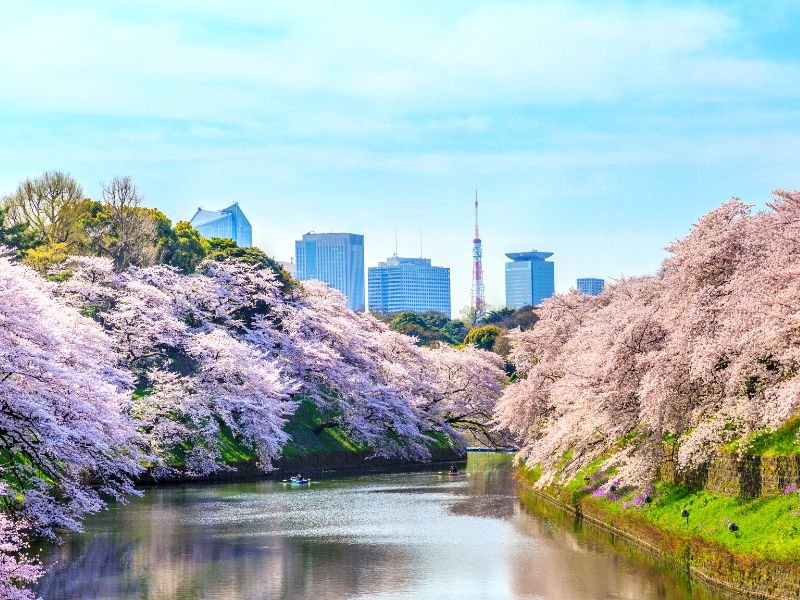
Originally, the Chidorigafuchi Moat was constructed as a defensive structure for the Shogun’s Edo Castle, which is now part of the Tokyo Imperial Palace. Its purpose was to protect the castle from potential threats such as rebels and state enemies. However, as time passed and society evolved, the use of these structures changed.
In the present day, the Chidorigafuchi Moat has become a popular attraction in Tokyo, particularly during the Hanami season. It offers a peaceful retreat in the heart of the city. From this location, visitors can enjoy a stunning view of the Tokyo Tower, set against the backdrop of trees in full bloom.
What to Expect in Chidorigafuchi Moat
Chidorigafuchi Park, home to the Chidorigafuchi Moat, is a haven for cherry blossom enthusiasts. It boasts over 250 individual cherry blossom trees, featuring species like Yoshino and Yamazakura.
Visitors can experience the park in two distinct ways. The first is a leisurely stroll along a 700-meter walkway that winds through the park. This path offers a close-up view of the cherry blossoms and the surrounding scenery.
The second option offers a different perspective. A boat ride on the Chidorigafuchi Moat provides a unique vantage point. From the water, visitors can appreciate the romantic and picturesque views of the park in a way that’s truly memorable.
How to Go to Chidorigafuchi Moat
Reaching Chidorigafuchi Moat is quite straightforward. It’s conveniently accessible via the Hanzomon Line, with the nearest station being Hanzomon Station. Upon exiting the station, a short walk of three to five minutes towards the east will lead you directly to the park. The first sight to greet you will be the 700-meter walkway, marking the beginning of your exploration.
Location: 1 Kitanomarukoen, Chiyoda City, Tokyo 102-0091, Japan
9. Shingashi River – A River Park in Tokyo Covered with Cherry Blossoms Petals

The Shingashi River, during the Hanami season, transforms into a picturesque cherry blossom spot in Tokyo. This river, stretching 34.6 kilometers or 21.5 miles, originates from the Musashino Plateau and merges into the Sumida River at Iwabuchi, located in Kita, Tokyo.
While the Shingashi River is extensive, cherry trees are found only in certain sections. For those interested in witnessing this spectacle, the area north of Miyashitamachi is the place to be. This part of the Shingashi River is almost entirely enveloped by cherry trees, offering a breathtaking sight during the full bloom season.
What to Expect in the Shingashi River
In the summer, the Shingashi River presents a serene spectacle. The cherry trees lining its banks form a lush green tunnel, offering a sense of tranquility. However, with the arrival of spring, the scene transforms. The river becomes a captivating pink tunnel, a sight so enchanting it’s hard to resist.
A boat ride on the Shingashi River provides a unique way to experience this beauty. Depending on the size of the vessel, one or two boatmen guide the boat using bamboo sticks, pushing off the riverbed.
On fortunate days, the surface of the Shingashi River is blanketed with cherry petals, creating a ‘pink river’. This picturesque scene, reminiscent of a movie or fairy tale, adds to the charm of the location.
How to Go to the Shingashi River
Going to Shingashi River is an effort of a 30-minute walk from Honkawagoe station on the Seibu Shinjuku Line. Alternatively, you can use these Google Maps routes provided in the link for lesser walking.
10. Meguro River – A River Park in Tokyo with Glamoring Lights

The Meguro River, stretching 7.82 kilometers or 4.86 miles through Tokyo, is a sight to behold. Its banks are adorned with beautifully landscaped cherry blossom trees, creating a picturesque setting. More than just a popular spot during the Hanami season, the Meguro River also serves as a green urban space for local communities.
While both the Shingashi River and the Meguro River feature cherry trees along their riverbeds, they offer distinct experiences. The Meguro River provides more convenient access, making it a popular choice for many visitors. However, for those seeking a more peaceful atmosphere, the Shingashi River is the ideal destination.
What to Expect in Meguro River
The Meguro River is lined with 800 cherry blossom trees, creating a picturesque scene that’s perfect for capturing memorable photos.
Along the river, you’ll find intriguing exhibits at the Meguro Museum of Art. For those seeking something a bit more unusual, the Tokyo Parasite Museum is also located nearby.
The riverbanks are dotted with stalls where you can grab a beer. The atmosphere is particularly festive during the Nakameguro Sakura Festival, a local celebration of spring marked by feasting under the cherry blossoms.
As dusk falls, the Meguro River transforms. Illuminated by glowing paper lanterns (until 9pm), the cherry blossom garden along the river becomes a stunning spectacle, adding a touch of glamour to the night.
How to Go to Meguro River
Here are the train stations near Meguro River:
- Ikejiri-Ohashi Station (Den-en-Toshi Line)
- Naka-Meguro Station (Toyoko Line and Metro Hibiya Line)
- Meguro Station (JR East Yamanote Line, Tokyo Metro Namboku Line, Toei Mita Line, and Tokyo Meguro Line)
- Gotanda Station (JR East Yamanote Line, Tokyu Ikegami Line and Toei Asakusa Line)
Here are the sightseeing or photograph locations of Meguro River (Click to view in Google Maps):
11. Sumida Park – See Tokyo SkyTree From This Park

Sumida Park, a slender stretch of land nestled along the Sumida River, is adorned with cherry trees. This setting provides a unique opportunity for photography enthusiasts. Here, you can capture the iconic Tokyo SkyTree, beautifully framed by the blossoming cherry trees.
What to Expect in Sumida Park
Sumida Park, despite its modest size and simplicity, offers a delightful view of the Tokyo Skyline. This vista is particularly enchanting when viewed under the canopy of cherry blossoms. Another notable sight within the park is the Asahi Beer Hall building. This unique structure, resembling a mug filled with frothy golden beverage, adds a touch of whimsy to the park’s landscape.
In addition to these sights, Sumida Park also features playgrounds for children and coffee shops for those seeking a leisurely break.
How to Go to Sumida Park
Reaching Sumida Park is a breeze. From Asakusa Station, which is serviced by the Ginza, Asakusa, and Tobu Isezaki lines, it’s a mere five-minute walk. This easy accessibility makes it a convenient destination for visitors.
Location: 1 Chome Hanakawado, Taito City, Tokyo 111-0033, Japan
12. Shiba Park – View of Tokyo Tower from This Park
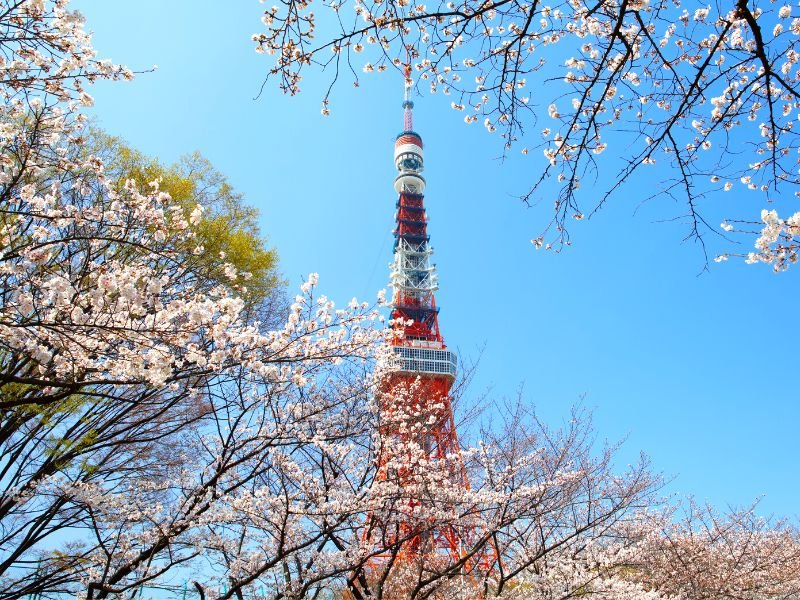
Shiba Park, one of Japan’s oldest parks, is a public space located in Minato. Established in 1873, it offers a unique vantage point for viewing the Tokyo Tower. Visitors can capture stunning photographs of the tower framed by cherry blossoms or fall foliage.
The park is a popular gathering spot in Tokyo. It’s common to see mothers and children enjoying a lunch together. Office workers often use the park’s exercise machines for a quick workout. Joggers, too, are a regular sight, making their rounds through the park.
What to Expect in Shiba Park
Shiba Park is a treasure trove of natural beauty. In the spring, cherry trees bloom in full splendor, providing a stunning backdrop for the Tokyo Tower. This combination makes for an ideal photograph, with the pink cherry blossoms framing the iconic tower.
The park also features an artificial ravine known as Autumn Leaf Valley or “Momiji-Dani”. Here, the leaves of the trees transform into vibrant shades of gold and red during the autumn season. Among these trees stands a massive Japanese zelkova tree, measuring 20 meters in height and boasting a trunk circumference of 2.5 meters.
Shiba Park is also home to several shrines, chapels, and temples. Notable among these are the Shiba Toshogu Shrine and the Zojoji Temple, which offers a unique view of the Tokyo Tower in the background.
In addition to cherry trees, Shiba Park also hosts plum trees. Timed right, visitors can witness these trees in full bloom, adding another layer of charm to the park’s landscape.
How to Go to Shiba Park
There are several stations near Shiba Park:
- JR Hamamatsucho Station (Yamanote Line)
- Daimon Station (Oedo and Asakusa Subway Lines)
- Akabanebashi Station (Oedo Subway Line)
- Shiba Koen Station (Mita Line) – The nearest station to Shiba Park
Location: 4 Chome-10-17 Shibakoen, Minato City, Tokyo 105-0011, Japan
Save it on Pinterest.









